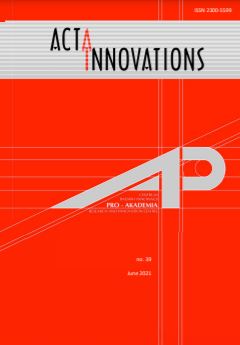A STUDY OF THE POSSIBILITY OF USING 3D MODELLING AND 3D PRINTING FOR ELECTRICAL CAPACITANCE TOMOGRAPHY SENSOR
A STUDY OF THE POSSIBILITY OF USING 3D MODELLING AND 3D PRINTING FOR ELECTRICAL CAPACITANCE TOMOGRAPHY SENSOR
Author(s): Aleksandra Kowalska, Robert Banasiak, Andrzej Romanowski, Dominik SankowskiSubject(s): Economy, Energy and Environmental Studies, Visual Arts, ICT Information and Communications Technologies
Published by: Centrum Badań i Innowacji Pro-Akademia
Keywords: Electrical Capacitance Tomography; 3D printing; industrial processes; optimization; energy; resources;
Summary/Abstract: Nowadays, the optimization of energy consumption and resources is one of the most urgent topics in worldwide industry. The energy consumption monitoring and control in various multiphase flow industrial applications, where a proper flow characteristic and an optimal phase mixture control is crucial, is hard to perform due to the physical and chemical complexity of the processes. The Electrical Capacitance Tomography (ECT) is one of the relatively cheap non-invasive measurement methods that can help in the monitoring and control of optimal energy and resources dozing in industrial processes. ECT diagnostics systems use unique sensors that can non-intrusively detect spatial capacitance changes caused by spatial changes in the electrical permittivity of industrial process components. One of the latest ECT extensions is a three-dimensional measurement strategy that uses a multilayer structure of the capacitance sensor. In this paper, the authors propose a novel approach to the 3D ECT sensors fabrication process that uses 3D computer modelling and 3D printing to easily get any sensor shape, electrode layout, scale and shielding strategy. This study compares the measurement abilities of a 3D ECT sensor fabricated using a traditional hand-made technique with the 3D printed device. The results have proven the potential of the new 3D print-based sensor regarding its significant fabrication time reduction as well as the improvement of the overall 3D ECT sensor measurement accuracy and stability.
Journal: Acta Innovations
- Issue Year: 2019
- Issue No: 31
- Page Range: 23-32
- Page Count: 10
- Language: English

